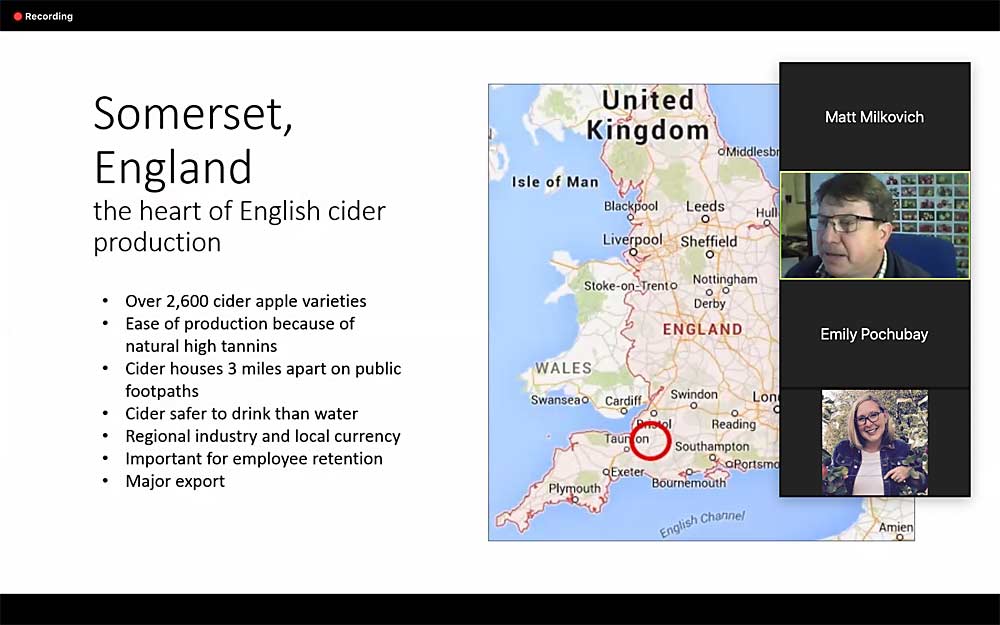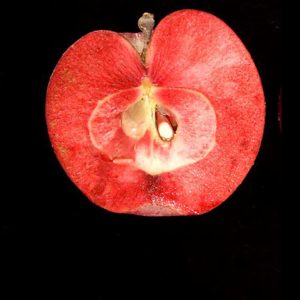
Somerset, England, is the “heart of English cider production.” Acres of orchards there grow more than 2,600 cider varieties. Cider houses sit an average of 3 miles apart on public footpaths. The hard cider industry plays a huge role in the local economy, said Neil MacDonald, a grower, cidermaker and business owner in the region.
MacDonald spoke on the third day of the Great Lakes Fruit, Vegetable and Farm Market EXPO, giving North American cidermakers and growers some perspective on the growing, harvesting and marketing trends happening on the other side of the Atlantic.
More than 95 percent of cider apples in the United Kingdom are mechanically harvested. Tree spacings in cider orchards are generally 2.5 by 6 meters, or about 665 trees per hectare. They grow dozens of varieties, mainly on Malling rootstocks, but Dabinett is the real workhorse, he said.
Apples are shaken from the trees then harvested from the ground by machines. The minute MacDonald starts harvesting fruit, his goal is to get it processed within 24 hours. His farm presses about 5 tons of apples per hour.
Hard cider is a huge industry in Europe, especially in the U.K., where it commands about 8 percent of all alcohol sales. Hard cider’s growth in the rest of the world has been “astonishing,” he said.
COVID-19 has been rough on U.K. cider sales. Pubs and restaurants sell huge volumes of cider. When they closed, it really hurt the industry. There’s now a massive oversupply of cider and cider apples. Because there’s so much fruit, MacDonald expects it will be years before growers and cidermakers enter into new contracts.
“It’s not been a terrific time,” he said.
Rises in bulk, online and other sales have helped somewhat, but MacDonald said he hopes U.K. festivals and sporting events, big drivers of consumption, open again soon.
—by Matt Milkovich







Leave A Comment